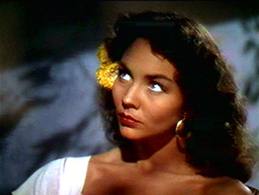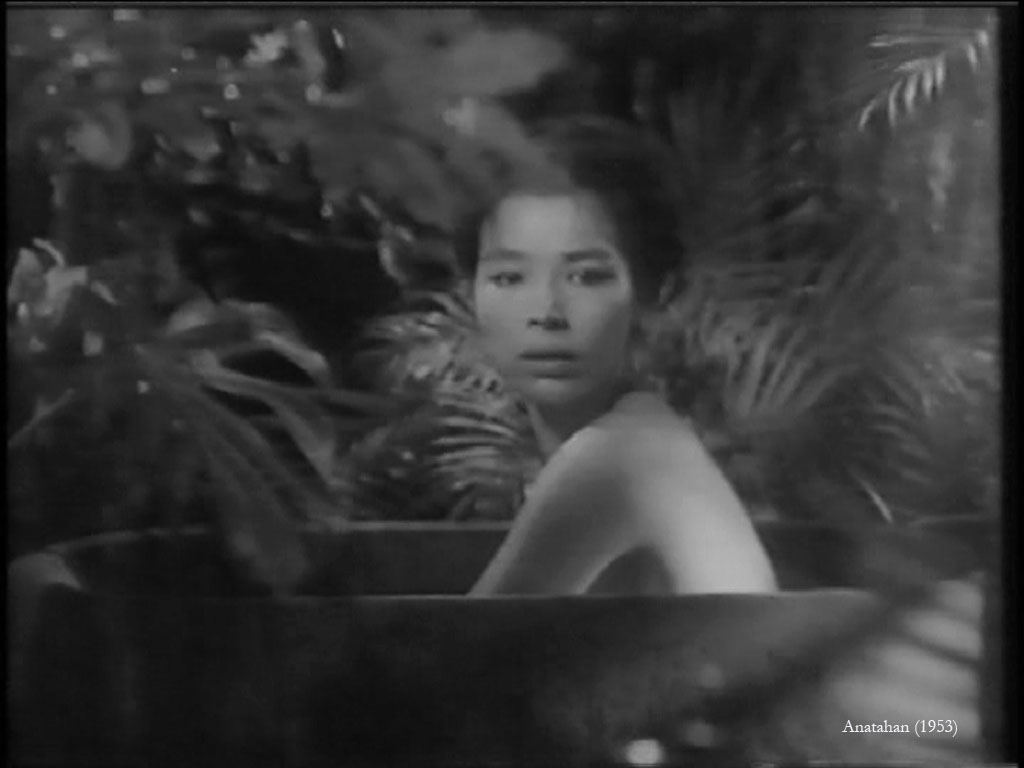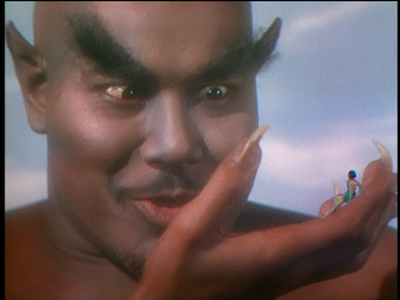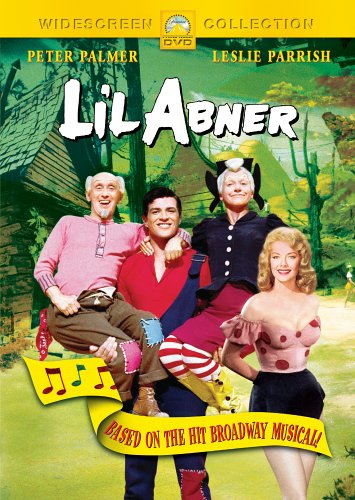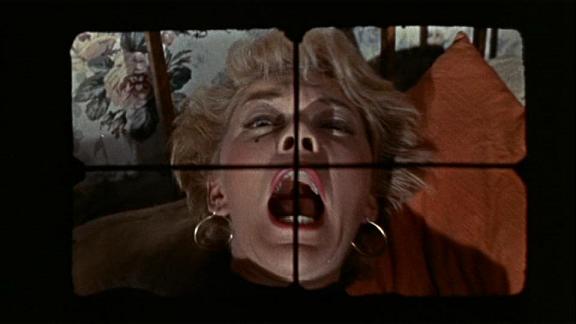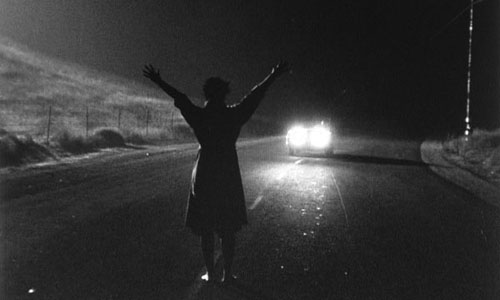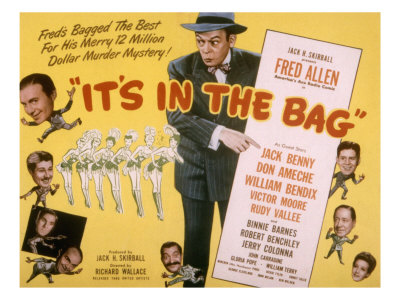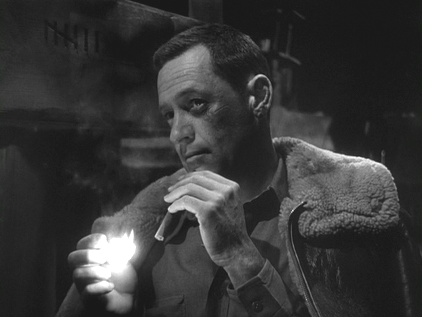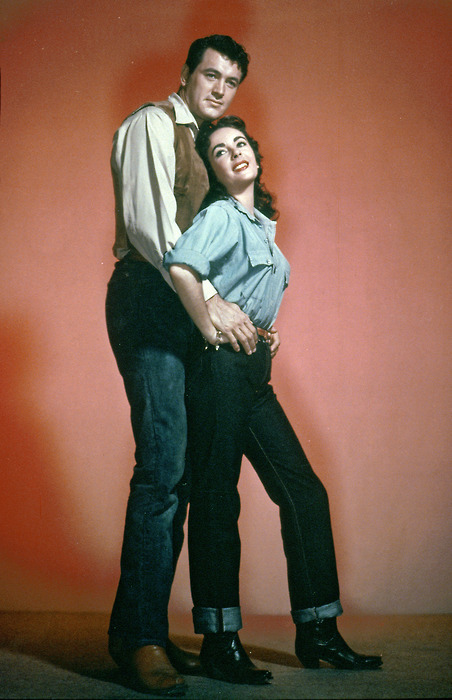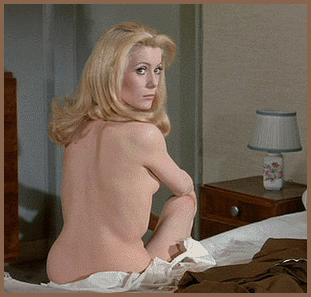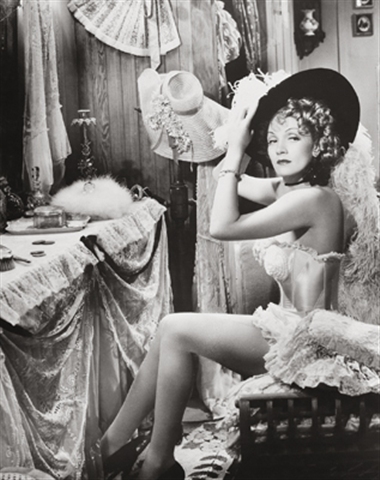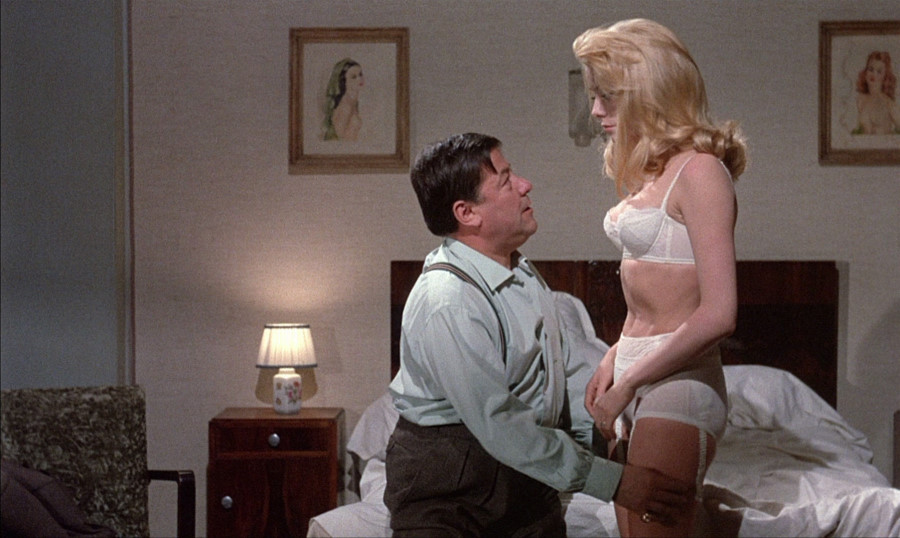Originally published in the May-June 1973 issue of Film Comment; it’s reprinted, along with my 2002 Afterword, in my latest collection, Goodbye Cinema, Hello Cinephilia. (The following paragraphs are now slightly out of date, but I’ve retained them as records of where things stood at the time.)
Reprinting this piece has been prompted by two exciting pieces of news: the relaunching of a Raymond Durgnat website, thanks to the efforts of one of Durgnat’s old friends, Sue Ritchie, and the long, long overdue second edition of Durgnat’s irreplaceable 1970 book A Mirror for England: British Movies from Austerity to Influence, which the British Film Institute is bringing out next month, thanks to the efforts of another old friend, Kevin Gough-Yates, who provided a new Introduction (and has also been behind the earlier creation and the recent recreation of the Durgnat website).
The website, at raymonddurgnat.com, currently includes a biographical sketch, a very detailed, hefty, and rather awesome bibliography, four poems by Ray (all of them veritable collectors’ items), four “additional resources and links,” a Raymond Durgnat Forum that awaits commentary from visitors, and nine full-length articles that can be linked through the bibliography. One hopes that many more attractions, especially texts, can be added in the future, for a world is still waiting to be found in Durgnat’s writing. For me, he is not only the greatest and most important of all English film critics but far and away the most underrated and neglected.
Another book to treasure is The Essential Raymond Durgnat, a superb and definitive collection of previously uncollected essays that has been edited by Henry K. Miller and easily rivals my two other favorite Durgnat books, Nouvelle Vague: The First Decade (his first, 1963) and WR – Mysteries of the Organism (1999, the last to be published while he was still alive) — the latter of which is happily still in print (along with The Strange Case of Alfred Hitchcock, 1974, and A Hard Look at “Psycho”, 2002). — J.R.
Raymond Durgnat was born in London of Swiss parents in 1932. He studied English literature at Cambridge, was a staff writer for the British Elstree Studios, and did research in film at the Slade School of Fine Art. He is currently head of General Studies at St. Martin’s School of Art. In 1963, he cited Jerry Lewis and Clara Bow as his favorite movie stars and published Nouvelle Vague: The First Decade, an analysis of the films of 34 French directors that has long been out of print and remains the most thorough single work ever done on the subject, in English or French.


Seven more books on film by Durgnat have been published over the last decade. He has also written an uncountable number of uncollected articles and reviews, including a first-rate appraisal of six Josef von Sternberg films for Movie (under the name of O.O. Green, which permits Durgnat to quote appreciatively from his own work twice), an indispensable genre survey (“Paint it Black: The Family Tree of Film Noir”), and a book-length study of Alfred Hitchcock that appeared serially in Films and Filming (February-November 1970). (1) In 1969, he listed as his ten favorite films Quai des brumes (Marcel Carné, 1938), La Ronde (Max Ophüls, 1950), Vampyr (Carl Dreyer, 1932), Miracle in Milan (Vittorio De Sica, 1951), Duel in the Sun (King Vidor, 1946), The Saga of Anatahan (Sternberg, 1953), Allegretto (Oskar Fischinger, 1936/43), Duck Soup (Leo McCarey, 1933), The Thief of Bagdad (Ludwig Berger, Tim Whelan & Michael Powell, 1940) and French Cancan (Jean Renoir, 1955); and as his ten favorite directors Len Lye, Norman McLaren, Tex Avery, F.W. Murnau, G.W. Pabst, Dreyer, Sternberg, Renoir, Vidor and Tony Conrad.
RAYMOND DURGNAT: I was a staff writer for Associate British Pictures at Elstree Studios, did postgraduate research in film at the Slade School of Fine Art, and lectured in film at the Royal College of Art. Faber and Faber is publishing a thorough revision of the Films and Filming Hitchcock series as The Strange Case of Alfred Hitchcock. As for the Movie Sternberg piece, I’d been asked by another interested party to write for Movie anonymously, so what looks like nutty self-indulgence was my only way of getting a credit out of it.
2
Many (if not all) critics tend to fall into two categories, which might be called the Big Game Hunters and the Explorers. The Big Game (read: masterpiece) Hunters are basically out for trophies to possess, stuff, and hang on their walls; the Explorers usually poke around simply to see what they find. The Hunters are a relatively Apollonian group — disciplined, academic and generally traditional in their aesthetic values: immediate examples that come to mind are Robin Wood, (2) James Agee, William Pechter, Stanley Kauffmann, Dwight Macdonald, John Simon, and historians like Georges Sadoul, Jean Mitry and Lewis Jacobs. The Explorers, a more Dionysian group, are relatively cranky, kinky and eclectic: Jean-Luc Godard, Manny Farber, Robert Warshow and Raymond Durgnat are four eminent examples.
If the Hunters are mainly concerned with what Farber has called White Elephant Art — monoliths, like Kubrick’s in 2001: A Space Odyssey, that leave lasting traces — the Explorers are more drawn to Farber’s contrasting category of Termite Art, which “goes always forward eating its own boundaries, and, likely as not, leaves nothing in its path other than the signs of eager, industrious, unkempt activity.” (3) For the last ten years or so, Durgnat has remained the most active and far-reaching Explorer in British criticism. He is something of a wandering troubadour in his profession — in the variety of publications that he writes for, the range of subjects that he takes on, and even in the wayward drifts and occasionally strangled clauses of his prose style, a dense thicket of uncertainly placed commas and quotation marks that only rarely seems to do justice to the speed and rhythm of his thought.
RD: “Uncertainly placed commas” — I can’t proofread — “and quotation marks” — this was the result of an unhappy, early compromise between my academic bent and journalistic constraints. Quotation marks were meant to imply “I know this is a loose use of the word, but it has sense”. Now I either define it or don’t, and trust the reader to get the idea.
His penchant for surrealism and sociology has made his critical approach closer to that of the French magazine Positif than to the general orientation of Films and Filming, a slick English fan magazine where he has presided as house intellectual for over a decade. But in fact, his idiosyncratic methods and manners place him well beyond the pale of any established school of critical thought. In a letter replying to an unfairly abusive review of his book Films and Feelings in Sight and Sound, Durgnat asserted at one point, “I’m out to follow an argument, not seduce people”. (4) Walking alone, he tends to cast a long shadow.
RD: I was close to Positif, especially in its 1960-7 period. Surely Positif is an established school, and surely I’m within their pale, albeit writing from an Anglo-Saxon tradition (nearer I.A. Richards than F.R. Leavis).
An essential aspect of his wanderlust is that he rarely stays with any one subject for long, at least not in the rigorous, methodical way that characterizes André Bazin, Warshow or Wood. Even when he devotes a book to a single figure, like Luis Buñuel or Georges Franju, his characteristic approach is multilayered and varied, a continual shift of strategies, rather than the systematic pursuit of any single argument.
RD: The business of criticism seems to me ‘matters arising’, and naturally varies from film to film. I’d rather be wrong but open up a perspective than be prematurely right, i.e., dismiss opportunities for the full intellectual, sensual, emotional experience of reflective hesitation — which seems to me to be of the essence of art, as opposed to brusquer communication (e.g., moral saws, the human sciences).
On the few occasions when he does stick to one procedure — as in his study of character traits in Johnny Guitar in Films and Feelings and his sociological commentary on Panama & Frank’s Li’l Abner in The Crazy Mirror — the results are usually somewhat flat and academic. (A more successful example, also in Films and Feelings, is his extended psychological-political analysis of This Island Earth, which anticipates Susan Sontag’s essay on science fiction films, “The Imagination of Disaster”, in many important respects.) (5) As Robert Mundy points out, Durgnat “is often at his best writing about moments, rather than about films or directors”. (6) He can also be quite strong on individual aspects of films, as the following sampling of quotes demonstrates.
One craves, perhaps, a venture into those dark interiors where the fantasies of The Thief of Bagdad interpenetrate with those of Peeping Tom. Whence their centrifugality? The comparison with the director of The Citadel is pertinent. Vidor, intellectually, perhaps, less cagey and sophisticated than Powell, has retained an authenticity of emotional excess which endows his films with their genuine mysticism, founded on human energy. But Powell lived in a class, and a country, and a generation which suspects, fears and undermines emotion. Thus his diversity of qualities rarely finds their holding center. (7)
[Emil] Jannings allowed himself to stray as far from “realism” as comedians do — one can speak of “slow” expressionism, like Jannings’, and ‘fast’ expressionism, like Chaplin’s (or Jerry Lewis’). The middle term between them is exemplified by Catherine Hessling in Jean Renoir’s Nana (1926), where she gives what is both the best and worst performance in the history of the French cinema. With her petal-light limbs flung out into Napoleonic postures, her bee-sting mouth pouting in her heart-shaped face, her eyes narrowed till the pupils disappear under a palisade of lashes, her fluttering precocity and jagged stances, this awkward blend of Chaplinesque, quicksilver and marionette fixity comes, if only the spectator will adapt his response, to make at least as much sense as modern “Method”-ism. (8)
Hell [in Hellzapoppin’ ], by an atmospheric pun, is a combination of the traditional Hell (devils with horns roast blonde angels trussed to spits), and of a modern factory, where devils pedal away at grindstones and produce “Canned Guy” and “Canned Gal” (just at this time, of course, America was arming for war, and soon to draft people into munitions factories). (9)
Of course, not all of Durgnat’s strengths can be observed in short quotations. It is his special knowledge of and sensitivity to the surrealist tradition in France, for instance, that makes his study of Franju particularly valuable, and richly evocative in a way that most Anglo-American criticism of Franju is not. And on a few occasions, when Durgnat grasps a film as the meeting ground of several interconnecting influences, traditions and social forces, he is able to treat it as a complex but homogenous unity: his essays on Kiss Me Deadly (10), and Judex (1963) in the Franju book, are probably the best things that have been written on either film.
Finally, one can value Durgnat for the wealth of movies that he’s seen, and the unknown delights that he often brings to our attention. While I find it difficult to share his enthusiasm for Li’l Abner — particularly since nothing he says about it even remotely convinces me to go back to it — I can only applaud his frequent allusions to such unjustly neglected works as Her Man (Tay Garnett, 1930), The 5,000 Fingers of Dr. T. (Roy V. Rowland, 1953), It’s In the Bag! (Richard Wallace, 1945) and the cartoons of Tex Avery, even if none of these has received the extended treatment from Durgnat that one would hope for.
RD: Is “going back to it” the only response a critic can hope for? I had a different end in view: to spell out some of the ways in which comedy calls on reality. Lawrence Alloway, of all people, couldn’t understand what I was trying to do in the not dissimilar piece on This Island Earth, a film which I’ve no particular enthusiasm for, either. I was out to show that there are more meanings in ordinary meanings — of the shallow type required for entertainment — than usually spotted by critics, who imagine that only important art can involve people and make poetic and ideological points. I’m looking at movies which are run-of-the-mill yet saturated with something too shallow really to be myth (in the full sense), but too ambivalent to be merely cliché. I’m trying a kind of micro-criticism, more concerned with the molecules of a film’s meaning than the implications of its meaning.
3
When Durgnat attacks Pauline Kael’s “Fantasies of the Art-House Audience” (11) at some length in Films and Feelings for its puritan assumptions, one feels the confrontation of two critics on a common turf. Quite simply, Kael and Durgnat are two of the most accomplished sociological film critics since the death of Robert Warshow, and the differences between their approaches are instructive. It is frequently said of Kael that she reviews audiences as much as films; one might add to this that her moral evaluations of each tend to precede her analyses. In Durgnat’s case, analysis of what theoretically takes place between the film and the audience comes first, and any moral evaluation of this occurrence is usually either postponed or suspended. Within the terms of Durgnat’s sociology, concepts of good and bad, right and wrong are relatively non-existent — or at least non-essential.
RD: No, they’re essential, but… no more so than some other non-moral spiritual axes. Does my work really give an impression of amorality? Surely I often talk morally, even in the case of This Island Earth.
This is not to suggest, of course, that Durgnat doesn’t evaluate films, or that he avoids moral judgments: he periodically makes his tastes and preferences known, and some of his judgments – like his notorious dismissal of Godard — are couched almost exclusively in moral terms:
Godard wears dark glasses to hide from the world the fact that he’s in a constant state of ocular masturbation, rubbing himself off against anything and everything on which his eye alights. The flickering glance of his camera is the constant dribble of premature ejaculation. It is an unseeing stare. Godard keeps babbling on about the world being absurd because he can’t keep an intellectual hard-on long enough to probe for any responsive warmth. (12)
RD: This passage of mine was rude so that the reader wouldn’t take it too solemnly as a moral point. At that time, the consensus was taking Godard as a sort of sage of solipsism. I wanted to say that his films weren’t just about triumphs over the medium, but about a predicament too absurdist to be tragic in the traditionally dignified way. And, after all, he did a right-, or rather left-about turn intellectually soon afterwards. This sort of Portnoy’s Complaint of the bourgeois intelligentsia is the shadow side of the ‘reflective hesitation’ I was advocating earlier — hence the suddenly violent metaphor! Besides, those same “Asides” do describe Godard’s first two features as “masterpieces”, which is high praise, surely.
But while Kael discusses contemporary films as interactions and encounters between screen and audience, Durgnat isolates mythic and archetypal structures that bind the two into an indissoluble whole.
RD: The danger is of binding them into an over-schematized, stylized whole — merely a set of conventions. But the alternative sense, of “baseline possibilities” within which each audience reacts differently, is neatly suggested by your “court” metaphor.
If film watching suggests the back and forth movement of a tennis game, Kael’s eye is on the players, while Durgnat’s is on the court.
RD: I wonder if three subjects for moral judgment are being telescoped here: (1) The moral impact on an audience of a film (what real spectators, in groups, make of it, in fact); (2) The moral assumptions and conclusions of a film when fully and correctly apprehended by a kind of ideal spectator, an ami inconnu; and (3) Durgnat’s own moral attitudes. Obviously, they interconnect in his writing. But so far as (1) is concerned, Durgnat’s moral polarity revolves around the question of honesty and insight (good) as against mystification and easy cliché (bad). Thus, Billy Wilder’s Stalag 17 is a better description of capitalist processes than George Stevens’ Giant. But nihilist or Fascist films may be good insofar as they undermine everyone else’s complacencies, and state uncomfortable truths.
4
Durgnat’s unwavering hatred for the elitist and middlebrow stances of Sight and Sound, which crops up periodically in his work, has probably provided his career with as much sustained focus as Robin Wood’s admiration for F.R. Leavis has unified the thrust of Wood’s work.
RD: I’d say ‘consistent disagreement’; I hope I don’t read as if I’m negative or rooted in hatred. It’s true that Sight and Sound has often given me a useful chopping block, and that it did deserve attack, if only because it was both so generally accepted, and itself so extremely destructive and dismissive, during its very bad period (1956-68, roughly). Probably there isn’t any sustained focus for my work, in the sense of an overriding preoccupation, because, like your traditional liberal humanist, I’m interested in everything to do with art — and with art because it has to do with human experience. Homo sum, humani nihil a me alienum puto [‘I am a man, and consider nothing human to be foreign to me’], as Terence said circa 150 BC.
The striking contrast between Durgnat and Wood, who are quite likely the two most ambitious English film critics in their generation, is a remarkably complementary one in many respects. The somewhat explicit relationship of Wood to Freud is balanced by the more implicit (but equally crucial) link of Durgnat to Jung. In a certain sense, Freud/Wood seek to civilize the unconscious by exposing its mysteries and terrors to the light of day, while Jung/Durgnat are more bent on achieving a truce and partnership between night and day, mystery and logic.
RD: I know the contrast is only an analogy, but I’m nearer Freud than Wood in my pessimism about moralistic rationalization, and about any hope of civilizing the unconscious. Wood, like F.R. Leavis, is puritanical, and I’m not; but it’s worth remembering that puritanism is only one moral position, and a minority one. I suspect that Buñuel’s mixture of Jesuitical casuistry, inverted Marxist “pessimism of the intelligence”, and the surrealist inversion of Freud is beyond the capabilities of the puritan position, however evolved. To understand Buñuel, you have either to be innocent of puritanism, or to have taken it beyond the point where its internal incoherencies appear. Otherwise, you either dismiss it or just goggle at the shock and riddle of it all.
This sharp division was particularly evident when conflicting reviews of Buñuel’s Belle de jour (1967) by Durgnat and Wood were printed side by side in Movie. (13) Durgnat’s response is characteristically sympathetic: By liberal standards, the film is a fairy tale, its psychology is strange indeed. But its serene indifference to liberal notions is the condition of its insidious freshness. It can treat a psychopathic case in the Lubitsch style because bourgeois manners are psychopathic anyway. Wood concludes, on the contrary, that: For an adherent of an ‘ism’ explicitly dedicated to revolution, Buñuel, on the evidence of his films, seems remarkably defeatist, steering his characters towards their preordained hopelessness by eliminating any possibilities of health. Earlier in the review, he states: I don’t think that Buñuel feels anything much for Séverine as a human being; if the film evokes no disgust for her, it evokes no compassion or affection either. What one does take away is a pervasive nastiness.
Wood’s rejection of Belle de jour seems partially a function of the callousness with which he feels other people, including Durgnat, respond to it; George Kaplan attacks the potato-sack sequence in Frenzy (1972) with a similar attitude. (14) Speaking for myself, I was revolted by the audience’s reactions to the murders in The Godfather when I saw it, and disliked the film at the time for its capacity to elicit these responses. But are such judgments really legitimate to the films themselves, as opposed to how the audience chooses to take them? Wood asserts that in Belle de jour, “there is no attempt… to explore the potentialities of life; there is no sense of what normality is or more important, could be”. But surely the film does attempt to explore at least some of life’s possibilities; and a sense of what normality both is and could be is precisely what Buñuel conveys, in his treatment of Séverine’s acceptance of her masochism. It is hardly necessary to agree with Buñuel’s definitions of normality in order to accept the film.
RD: I agree with you, but your tone implies that normal people can hardly be expected to agree with Buñuel’s definitions of normality. I think many normal people would. We know that his “normality” involves a fullness of passion, an amour fou, a “real”ization of the essence of dream-life, as against hypochondriacal notions of emotional decorum. If you can accept Marlene Dietrich’s saloon girl in Destry Rides Again (1939), or Norman Mailer on the wisdom of prostitutes, you can accept Buñuel’s Séverine. Buñuel’s film is full of saddening ironies, and I’m sure he knows it. It’s sad and intricate because we can sense that Séverine and her husband should accept her repressed life and they don’t, forcing her to live it out in that imperfect, indeed tragic, way. Buñuel is asking us to consider the myopia, errors and cowardice which everyone in the film shows, at one time or another — just like us — all tangled up with misdirected hopes and acts of courage — just like us — and ending in frustration — which is common enough.
Real people are not the size they assume on large movie screens, and music doesn’t accompany our lives in quite the same way as soundtrack scores; birds are not intent on destroying mankind, and many of the temporal and spatial conditions of life in Only Angels Have Wings are patently unreal; if Wood can accept these and countless other conventions — including, say, the brutal sexist assumptions of Klute — why can’t he accept the compassion that Buñuel so visibly displays towards his heroine, by having her deepest desires gratified? (15)
RD: I don’t quite see her afternoons as quite so fine as “deepest” might suggest, although I agree with your general drift. A major reason for art is to enable us to share — and sensitize ourselves to both the surfaces and the structures of experiences existing on temperamental and moral coordinates different from our own. It’s what you’re slowest to approve of that teaches you the most. (I don’t say that whatever you disapprove of is therefore good.)
For Wood, the discovery of what he considers to be positive moral values in a film is a prerequisite to his appreciation of it — a requirement that Durgnat seems in no way bound to. When Wood finds what he’s looking for, he can take hold of a film with a precision that few other critics can master, conveying its total impact with a passionate clarity that seems well beyond Durgnat’s range. But when he confronts those films whose “positive values” are problematical, at least from a traditional standpoint, it often appears that he either dismisses these films unjustly — as he does with Belle de jour — or supplies them with moral resonances that they don’t have; which I think he does, even more damagingly, with Nicholas Ray’s Bigger Than Life (1956). (16)
RD: Do you really think that there is just one tradition of positive values in our culture? Then how do you square, say, George Eliot, Nietzsche, Kafka, Bessie Smith? I’d have thought that one of our problems was precisely the cynicism induced by our multitude of conflicting moral and spiritual cultures, and the very great difficulty of creating a synthesis which is neither weak nor narrow.
Bigger Than Life is a profoundly upsetting exposure of middle class aspirations because it defines madness – the drug-induced psychosis of Avery (James Mason) – as taking these values seriously. Each emblem of the American dream implicitly honored and worshipped by Avery in the opening reel is systematically turned on its head, converted from dream to nightmare, by becoming only more explicit in his behavior. The dramatic function of his incurable disease and his taking of cortisone, carrying the respective promises of death and superlife, is to act on the slick magazine ads that Avery and his wife try to inhabit in much the same way that expressionist lighting works on actors’ faces (or, to cite an analogy from the film, the X-ray of Avery’s torso); it highlights details that are already actively present.
Wood seems somewhat aware of this aspect of the film, and shows much sensitivity towards certain manifestations of it; but his Leavis-inspired concern for moral centers ultimately leads to a taming of the film’s subversive implications. After noting persuasively that the basic creative tension in Ray’s work is between “conscious, rational control” and “the promptings of spontaneous, anarchic impulse”, he minimizes this tension by avoiding the film’s anarchic thrust, virtually turning Ray into a safe social democrat. “It would be quite wrong to see Bigger Than Life as a simple endorsement of the American bourgeois family,” he soberly states, in a tragicomic understatement that brutalizes the film’s meanings (does he consider it a complex endorsement?). To say this about one of the most scathing portrayals of the American bourgeois family that the cinema has given us! Turning away from the film’s powerful negativity and despair in his search for “an impulse towards the formation of human norms”, he reaches for the unconvincing closing scene of family reconciliation – an ending that, as we learn from an interview with Ray, was composed hastily just before it was shot, and is completely unsatisfactory to the director himself. (17) Wood then concludes that the film’s “message (in so far as a complex work of art can be said to have one) is not ‘Be satisfied with what you’ve got’ but ‘Work with what you’ve got, empirically and realistically. And know yourself’”.
RD: Oh, I obviously must see Bigger Than Life!
But does Bigger Than Life really offer us the luxury of such Sunday school lessons? One could probably summarize two of Mr. Wood’s other favorite films with equal justice by saying that Marnie teaches us that “Honesty is the best policy”, while the message of Rio Bravo is “A friend in need is a friend indeed”.
RD: Perhaps Wood does take some moral as a precondition of a film’s being artistically satisfying, but he does distinguish the full experience from the moral summary thereof.
The weaknesses and strengths of any critic are likely to be bound up with one another: without Wood’s moral piousness and liberal squeamishness, or Durgnat’s occasional solipsisms and unwieldy structures, one suspects that the talents of each would be less than they are. Yet the feeling persists that these two gentlemen could learn a lot from each other.
RD: I’ve disagreed with Robin Wood throughout my Hitchcock book. I hope I’ve done so in a way that shows how much I respect him, and how much I’ve learned from him — which is a lot. Critics hope to be learned from (or else why write?) and to learn (or else why read?). It would be interesting to know whether Robin Wood has ever learned anything from Raymond Durgnat, or whether he thinks Durgnat is as morally sick as Rosenbaum’s account implies he ought. Certainly, another neo-Leavisite, David Holbrook, thinks Durgnat is revolting (“d for dirt, or Durgnat, section”). I wrote about Belle de jour without knowing Robin Wood was writing about it too, and remain unconvinced, along Rosenbaum’s lines. Yet the feeling persists that Rosenbaum’s real interest is his “friendly enemy” relationship with Wood, and that the Durgnat bit is a framework around it! Perhaps Durgnat disappears behind his own eclecticism, and even the critical persona can’t be seen — or seems relatively sloppy or boring. I’d hate to think it really was!
Afterword (2002)
Having written this almost thirty years ago, when I was living in Paris, I’m surprised to discover that I still agree with a lot of it, even though it seems to be written by someone else. It led, quite unexpectedly, to the first exchange I ever had in print with another film critic — an event masterminded by Richard Corliss, the editor of Film Comment at the time, who sent Ray the galleys of my article, and then kindly sent me the galleys of his responses. Under the circumstances, I’m still grateful to Ray for letting me off so easily. In fairness to him, I should stress that his comments were intended by him to be run as footnotes to some of my points, so he wasn’t prepared for the prominence they were given in the magazine as a separate article titled “Apologia and Auto-Critique”. As he put it to me when we met for the first time, in London, a few months later, he felt more comfortable “sniping” at me from the sidelines — a preference that points to what I regard as his dependable underground instincts, which I suspect have accompanied him throughout his career.
Ray has argued that the dated aspects of films directed by William Wellman are more valuable than the relative “timelessness” of those directed by Howard Hawks because they have more to tell us about the worlds they came from — which is another way of saying that film criticism can and should be a way of writing about the world. (18) By the same token, I’d like to think that this ancient essay of mine about Durgnat might be worth reading today precisely for its outdatedness — not only in relation to Ray and myself, but in relation to the world we were both inhabiting in the early ‘70s. When I wrote it, “Durgnat” was simply a prominent name in my well-thumbed library of film books and magazines, shipped from New York to Paris — a library that hadn’t yet included his hefty books on Renoir, Hitchcock and King Vidor, Sexual Alienation in the Cinema and WR – Mysteries of the Organism (the latter my second favorite Durgnat book to date, after Films and Feelings), not to mention an uncountable number of articles in English and American magazines, including many that I still haven’t managed to track down.
In other words, Ray wasn’t yet a friend or one-time housemate (as he became in a San Diego suburb in 1977, when both of us were teaching in the same department nearby), but he was already a major reference point. (19) Consequently, it was easy to misread him as a person even more than as a critic. Knowing that he had Swiss parents, I regarded him in part as a conduit into French culture — the New Wave and surrealism, Franju and Renoir — and therefore as a guide of sorts into the international underground, without imagining that he was also capable of wearing Union Jack socks, as I would discover a few years later, and English to the core. Similarly, viewing Durgnat as a refreshing opponent of the puritanical streak in ‘60s Anglo-American film criticism, as represented by Penelope Houston (in his memorable polemic “Standing Up For Jesus” — a critical touchstone for, among many others at the time, the late Jill Forbes, whom I knew in Paris) (20) as well as Pauline Kael (in his extended response to her “Fantasies of the Art-House Audience” in Films and Feelings), I misread his opposition as “unwavering hatred” rather than good-natured snipe-shooting — and was pleased to discover later that his critique of Kael actually led to a friendly correspondence with her.
By the same token, I was much too eager to square Ray off against Robin Wood — an indication of my temperament rather than his, which understandably led him to the incorrect suspicion that Robin was the real focus of my piece. In fact, this was merely an effort to shoehorn an argument about Bigger Than Life that was preoccupying me at the time into an article where it didn’t belong — justified (or, at least, rationalized) in my mind by Ray’s own almost Sterne-like digressions. But I should have realized that no two writers ever digress in the same way or for the same reasons, and three decades later, I hope Ray will accept my apology for confusing my bugaboos with his own. Such are the perils of mimetic criticism, to which fledgling critics are especially susceptible.
Note: Ray Durgnat died on May 19, 2002, around the same time that this article and afterword, as part of an online tribute to him, were being posted.
***
Notes (mostly by Adrian Martin):
1. O.O. Green, “Six Films of Josef von Sternberg”, Movie no. 13 (Summer 1965), 26-31, reprinted under Durgnat’s name in Ian Cameron (ed.), Movie Reader, New York: Praeger, 1972, 94-99; Durgnat, “Paint It Black: The Family Tree of the Film Noir”, Cinema (UK) no. 6/7 (August 1970), 48-56, reprinted in Alain Silver & James Ursini (eds.), Film Noir Reader, New York: Limelight Editions, 1996, 37-51, and also condensed into a chart (under the title “The Family Tree of Film Noir”) in Film Comment (November-December 1974), 6-7; the Hitchcock essay series appeared in Films and Filming (February-November 1970).
2. For Robin Wood’s response to this characterization see the chapter “Big Game” in his Personal Views, revised ed., Detroit: Wayne State University Press, 2006, 17-42.
3. Manny Farber, Negative Space, New York: Da Capo, 1998, 135.
4. Philip French, “A World on Film and Films and Feelings”, Sight and Sound (Autumn 1967), 210-11; Raymond Durgnat, “Correspondence”, Sight and Sound (Winter 1967/8), 52.
5. Susan Sontag, Against Interpretation and Other Essays, New York: Dell, 1969, 212-28.
6. Robert Mundy, “Raymond Durgnat”, Cinema (US) Vol. 7 No. 2 (Spring 1972), 59.
7. Durgnat, A Mirror for England: British Movies from Austerity to Affluence, London: Faber and Faber, 1970, 215.
8. Durgnat, Films and Feelings, London: Faber and Faber, 1967, 89-90.
9. Durgnat, The Crazy Mirror: Hollywood Comedy and the American Image, Latimer Trend and Company, 1969, 174.
10. Durgnat, “The Apotheosis of Va-Va-Voom” in Eros in the Cinema, London: Calder and Boyars, 1966.
11. Pauline Kael, I Lost It At the Movies, New York/London: Marion Boyars, 1966, 31-44.
12. Durgnat, “Asides on Godard” in Ian Cameron (ed.), The Films of Jean-Luc Godard, London: Studio Vista, 1969,153. It is worth mentioning that later, in the same collection, Durgnat comes to the defense of Godard in his essay on 1+1 (1968).
13. Wood and Durgnat, “Belle de jour”, Movie no. 15 (1968).
14. George Kaplan, “Alfred Hitchcock: Lost in the Wood”, Film Comment (November-December 1972), pp. 46-53. [Editor’s Note: Kaplan was in fact Robin Wood.]
15. The words of a traditionalist critic might be helpful here. Samuel Johnson has argued that anyone entering a theatre can imagine that a couple of chairs and fake pillars are, say, Ancient Egypt: “Surely he who imagines this,” Johnson wrote, “can imagine more.” Why, then, couldn’t he imagine that Séverine attains fulfillment at the end of Belle de jour?
16. Robin Wood, “Film Favorites: Bigger Than Life”, Film Comment (September -October 1972), 56-61.
17. Movie no. 9 (1963), 19-20.
18. Durgnat, “Hawks Isn’t Good Enough”, Film Comment (July-August 1977), 13.
19. Editor’s Note: Subsequent to their meeting, Rosenbaum, Durgnat (and David Ehrenstein) collaborated on the roundtable discussion “Obscure Objects of Desire” in Film Comment (July-August 1978), 60-64, available online at http://www.jonathanrosenbaum.net/2014/02/obscure-object…-non-narrative/; and Durgnat discussed the first edition of Rosenbaum’s Moving Places: A Life at the Movies, New York: Harper and Row, 1980 (available online at www.escholarship.org/editions/view?docId=ft3s2005n8;brand=ucpress), in the review essay “Nostalgia: Code and Anti-Code”, Wide Angle Vol. 4, No. 4 (1981), 76-8.
20. Durgnat, “Standing Up for Jesus”, Motion no. 6 (Autumn 1963), 25-42. — Film Comment, May-June 1973; Notes and Afterword originally published in (but subsequently removed from) the online Senses of Cinema, issue no. 20, May-June 2002.
Published on 23 Aug 2011 in Notes, by jrosenbaum
This entry was posted on Tuesday, August 23rd, 2011 at 10:20 pm and is filed under Notes. Follow the comments through the RSS 2.0 feed. Both comments and trackback are closed.



